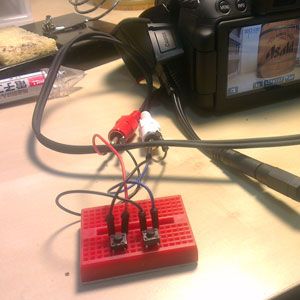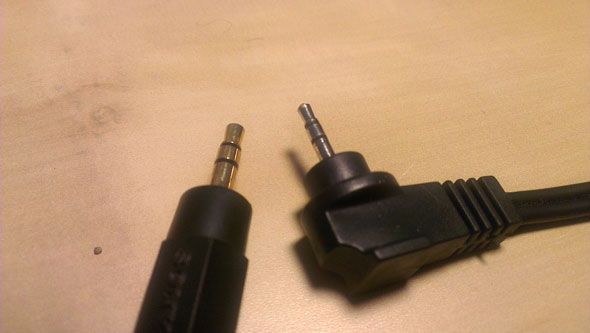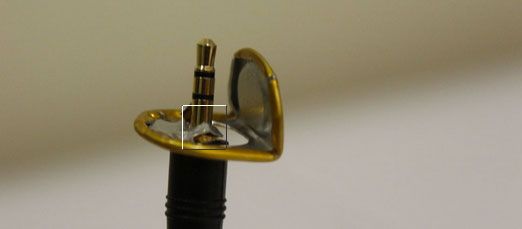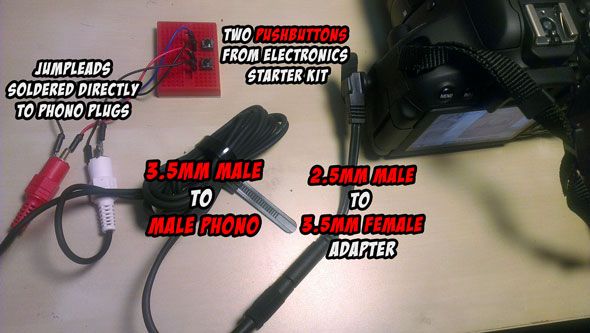If, like me, you got a DSLR for Christmas, you might start wanting for some accessories soon enough (and be to sure to check out these great sites for DSLR tips and DSLR video tutorials). One accessory you'll no doubt be after is a remote shutter; this allows you to place the camera on a tripod or rest it somewhere and trigger the shutter without the chance of shake that can occur when just holding it, or to use for self portraits without a timer. Today I'll explain the magic of remote shutter releases, how to make one yourself, and how to extend this for high speed photography too.
The first thing to know is that there’s actually no magic or complicated digital protocols involved with a shutter release; it's a simple switch that completes the circuit - two wires touching could do the trick. There's no voltages to worry about, power sources or electronic schematics - just a switch. On the camera side, it’s a standard 2.5mm stereo jack socket.
My Canon Rebel T4i (reviewed here) is able to both focus and shutter release remotely, though yours may only do shutter. Since most cameras have auto-focus anyway, you may not even need the remote focus button, but I’ll rig it in regardless.
On the camera side: 2.5mm male plug
2.5mm is used - amongst other things - on old mobile phones or walkie-talkies, to connect an external microphone or an earpiece. Note, 2.5mm is slightly smaller than the more widely used 3.5mm standard plug found on most consumer headphones and cheap speakers. Whilst I have many coils of 3.5mm cables to play with, I had to find a small 2.5mm male to 3.5mm female adapter to fit into the camera. As long as you have a 2.5mm male plug to stick on the camera end, you can rig up something useable.
Making a trigger
You’ve got a couple of options here:
If you have a 3.5mm or 2.5mm male connection at the trigger end, and wish to go for a true McGyer job without breaking or soldering the original cable, then bind off the pull-tab from a can of soda and use a pair of pliers to bend it in the middle. Fit this snugly to the base of the plug, then press it to the tip to complete the circuit and trigger the shutter. This instructable does a great job of showing you how it’s done, so I’ll just point you in that direction; apart from which I don’t drink soda (please don’t mistake that for a self-righteous "I'm so healthy" statement - I make my own beer so I have an infinite supply of that instead!)
For a more reliable option, you might have a push button or two lying around; these are switches that make a brief connection before the spring pushes them back up again. Here’s what I used:
- Male 2.5mm plug to female 3.5 socket adapter
- 3.5mm male to male phono audio plugs
- Soldered 2 jump wires to each phono plug, connected to a breadboard, with 2 momentary push switches I found in my Arduino starter kit.
For a wireless solution, consider this doorbell adaptation.
To take this to a whole other level, use either a basic transistor (such 2N2222) or an opto-isolator controlled by an Arduino. Add in a sound sensor and external flash, and you have an extremely advanced trigger for high speed photography, as this video below demonstrates. A single button turns off the room lights, and when the sound is detected, the flash and shutter are triggered, then lights turned back on. (Code available on GitHub)
For an even more in-depth guide on building a basic trigger, or if your camera is slightly different to what we've looked at, check out this PDF.
Did you rig up a remote shutter yourself? What did you use?




